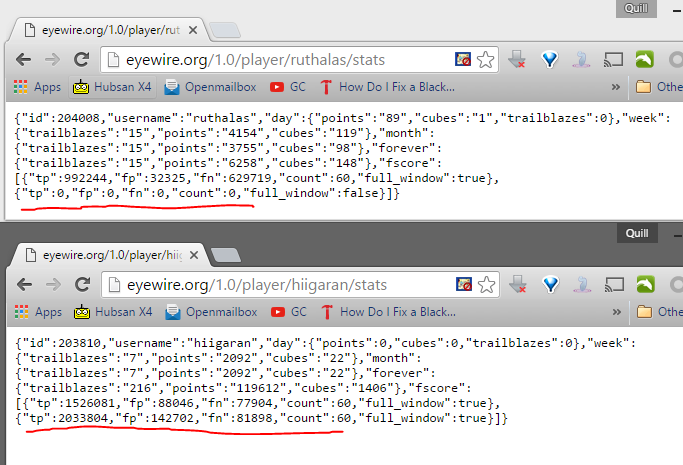I’d like to request that stats be accessible as plaintext (and therefore scrape-able) in the page source for a user’s profile.
It would make it simpler for third parties to compile statistics, lightening the burden for the Eyewire developers.
As an example, the ‘Folding at Home’ project which similarly relies on volunteers to perform scientific research (via donating computing power) exposes users’ stats simply and this has given rise to sites like Extreme Overclocking providing very fine-grained historical data.
This is great for setting up competitions and teams and other simple motivators for participation.
(It also appeals to me to be able to scrape and record my own data!)
Regardless, thanks for setting up a great tool/game!


 I remember you showed me your sick setup a while back.
I remember you showed me your sick setup a while back.
